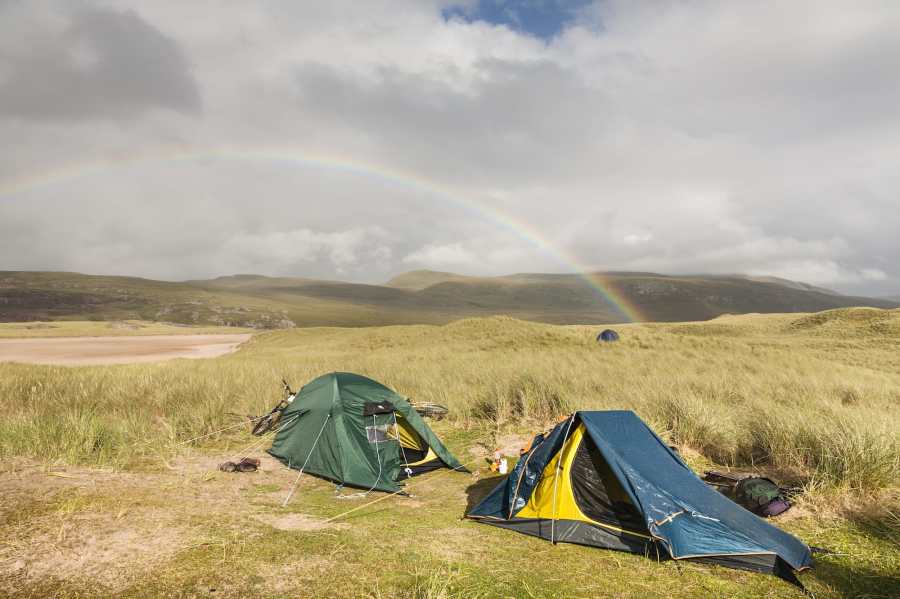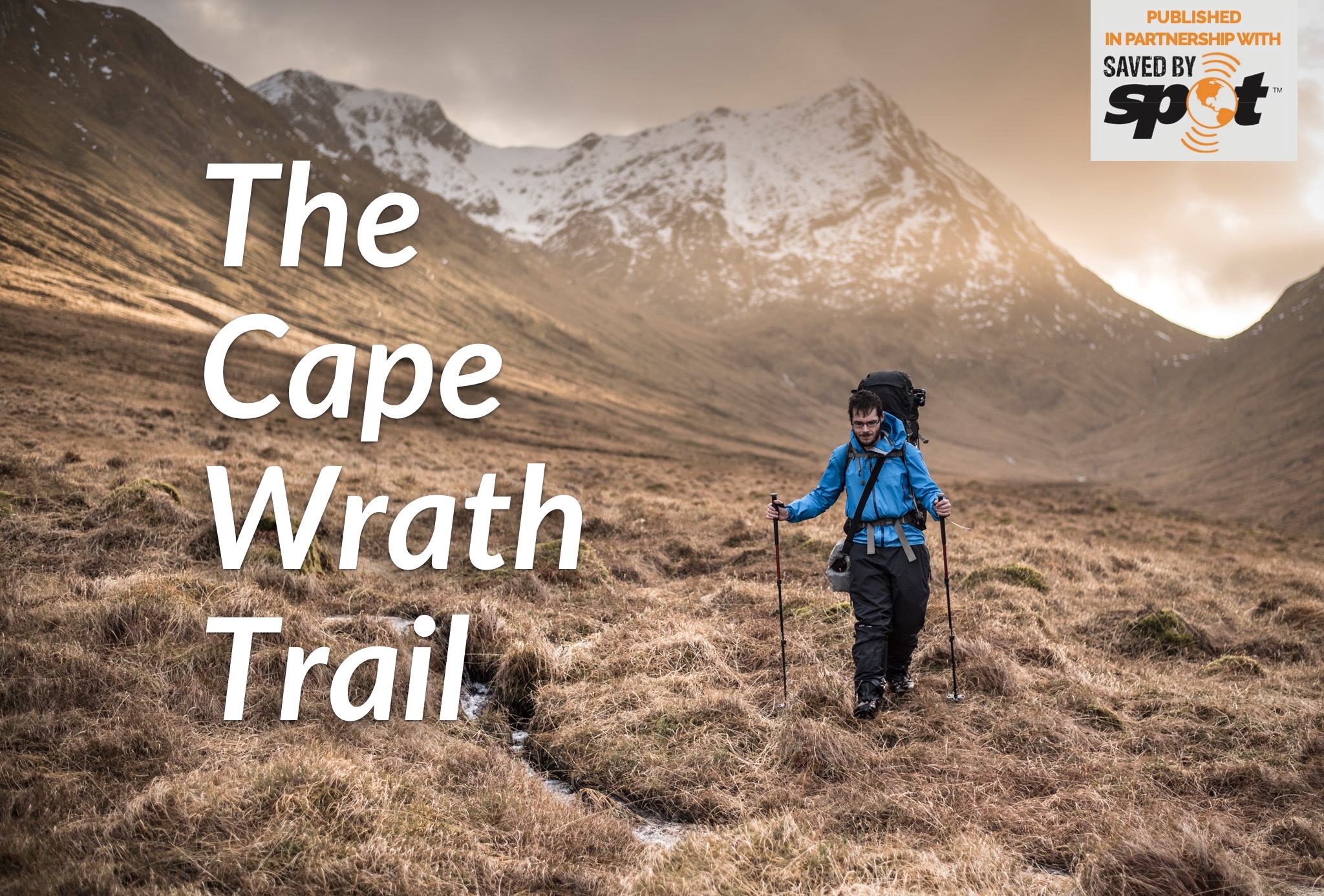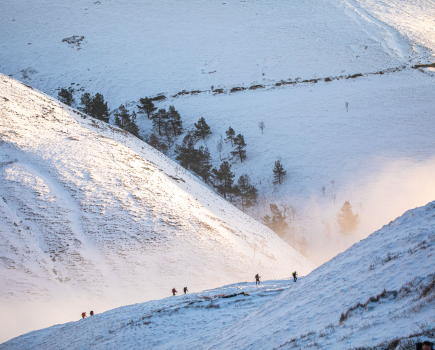The Cape Wrath Trail is the UK’s best long-distance hike. Here’s how to make the most of it
1. Know what you’re taking on
The Cape Wrath Trail (CWT) is an unofficial, unmarked long-distance route between Fort William and Cape Wrath, the farthest NW point in mainland Britain. It’s a good step up from waymarked trails such as the West Highland Way and Pennine Way – although both routes make good initial training for the CWT. To be in with a good chance of completing the CWT and having a safe, enjoyable time, you’ll need to have plenty of experience navigating off-path in Scotland’s mountains in all weathers, and also know what you’re doing when it comes to wild camping.
It’s regarded as the best for good reason. The Cape Wrath Trail takes you through the finest landscapes in the Western Highlands: Knoydart, Kintail, Torridon, Fisherfield, Assynt, NW Sutherland.
2. Get fit
Most CWT hikes are roughly 230-250 miles in length, depending on the exact route taken, and you’ll need at least two weeks to do it. Due to the rough, often pathless terrain and high chance of dodgy weather, even fit walkers might struggle to consistently achieve big miles on this trail. 10-15 miles a day is good going on the CWT, and they’ll be long miles with compass in hand over often featureless terrain.
A good level of hill fitness is essential. In the months leading up to your planned hike, get out in the mountains as much as possible with a big pack. A high proportion of aspirant CWT walkers give up and drop out at Kinloch Hourn (the first taste of civilisation after a few days on the trail). Don’t become a statistic!
3. Choose your route and time of year
People have walked the CWT in winter, but that’s a hardcore proposition. April to October is more amenable for most of us; the best of the weather is often to be found in April-May, although you will almost certainly get some rain at any time of year. Midges can make life challenging during the summer months, while snow can intrude on the higher parts of the CWT earlier in April. Ticks are an increasing threat from May to September and not to be underestimated (read our guide to avoiding and treating tick bites here).
There are several possible route variants. The first main choice is whether to jump in at the deep end by starting through Knoydart, or take the easier option by veering up the Great Glen then cutting back west towards Morvich. The Knoydart variant is more in the spirit of the route, but it’s challenging, with much rough ground and several river crossings.
Further north, other minor variations are possible. Harvey’s excellent Cape Wrath Trail maps clearly display most of the more common variants. Experienced walkers may wish to create their own route.
4. Overhaul your gear
You’ll be carrying your pack for over 200 miles, so it’s a good opportunity to go through your kit and remove items you don’t need. Most people will prefer a lighter pack – but don’t throw out every luxury item. When you’ve been walking in the rain for two days, something as simple as a dry pair of socks to wear in your sleeping bag can be a godsend.
If this is your first long-distance route, try to keep your base weight (that’s pack weight minus food, water and fuel) below roughly 10kg. It’ll make a big difference on the trail. However, don’t be tempted to cut corners on essential items – the middle of Assynt is not the place to discover your waterproofs aren’t. Read our tips for packing light here.
5. Prepare your support and logistics
There are only a few places on the CWT where it’s possible to stock up on food and supplies. There are stores at Shiel Bridge, Strathcarron, Kinlochewe and Kinlochbervie, and some CWTers divert to Ullapool for a full resupply (and maybe a rest day). One option is to post resupply parcels ahead, but by the time you pick up your supply box you may have gone off the food you decided to pack before the start of the trail! Most walkers will have no problems sourcing food locally.
There are several pubs, restaurants and cafes along the way. Worthwhile pitstops include the Kintail Lodge Hotel at Shiel Bridge (which has a bunkhouse), the Strathcarron Hotel, the Kinlochewe Hotel (bunkhouse), and the Inchnadamph Hotel (good-value rooms and walker-friendly).
6. Learn to love wet feet
The West Highlands cover some of the wettest ground in the UK, and the CWT often seems to strike a perfect line through the wettest areas of all. You’ve been warned!
There are two approaches to the problem: hike in big boots and try to keep your feet dry, or hike in breathable trail shoes and accept they will get wet. Both are valid, but whatever tactic you choose, you’ll still get wet feet.
7. Visit Scotland’s top bothies
The CWT is the ultimate bothy-bagging trip. Most of Scotland’s bothies are concentrated towards the west side of the country, and the main line of the CWT passes by a good many of them. From the electric-enabled Corryhully in Glenfinnan to the remote Maol-bhuidhe, from Glendhu’s dramatic location to the wild coastal sanctuary of Kearvaig, you’ll come to love and appreciate these unique unlocked mountain shelters. Don’t forget to adhere to the Bothy Code.
8. Enjoy a truly wild camp
Bothies are a key part of the CWT experience, and you’ll probably want at least one hotel stop to dry out, but the true spirit of the Cape Wrath Trail is in the wild camping. There’s something special in selecting a good campsite for the night in a truly wild and remote place. If you’ve never wild camped in Knoydart or Torridon before, or pitched a tent on the dunes of Sandwood Bay, you’re in for a treat. Here are our top tips for wild camping.
9. Don’t get bombed by the RAF
At the very end of the trail, Cape Wrath itself is a live-firing range for the Ministry of Defence, and is frequently closed for bombing runs. You’ll need to phone range control in advance (01971 511 242 or 0800 833 300) to find out if the area is closed off on your chosen completion date, but don’t leave it until the last minute – there isn’t much signal beyond Kinlochbervie!
Header image © Shutterstock / Jan Holm












